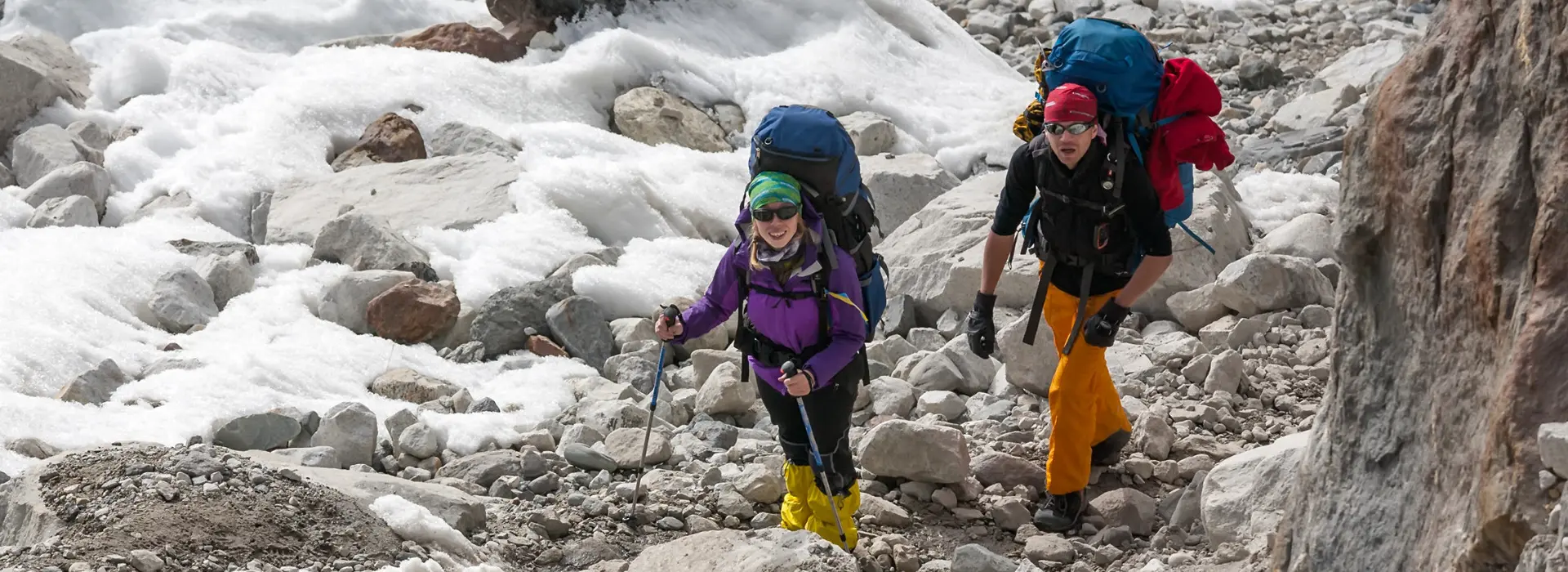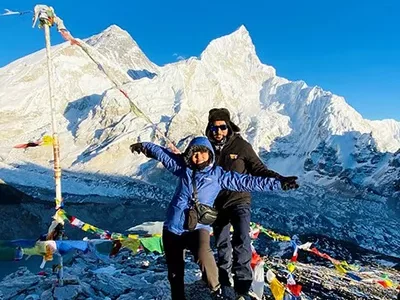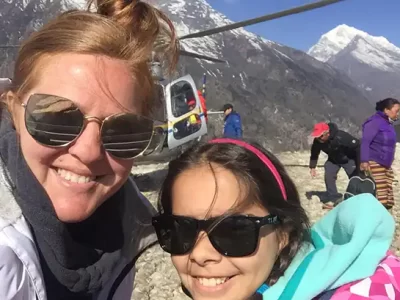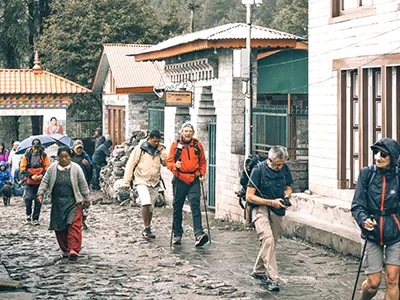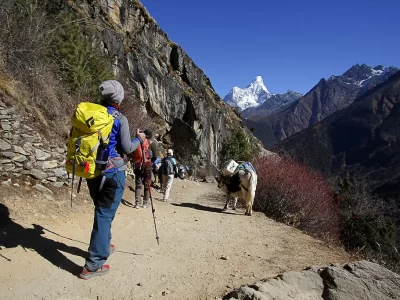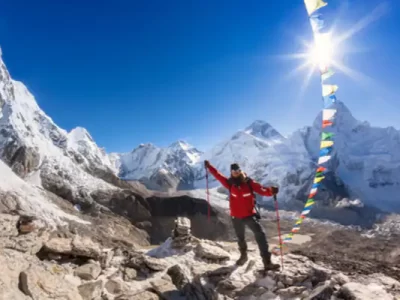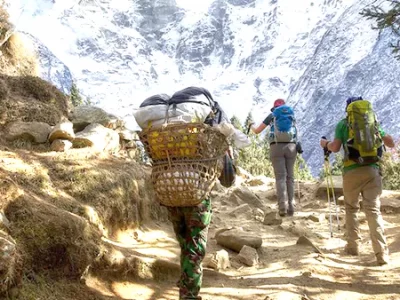The Everest Region set deep in the heart of the Himalayas, is renowned for striking heights, an animated Sherpa culture, and exciting trekking trails. High above any other geographical aspect in this region, the Mountain Passes of the Everest Region define daring routes across unfrequented valleys or settlements far off from civilization. These passes may be treacherous due to their great elevations and harsh terrains, but they give beautiful scenic views once crossed.
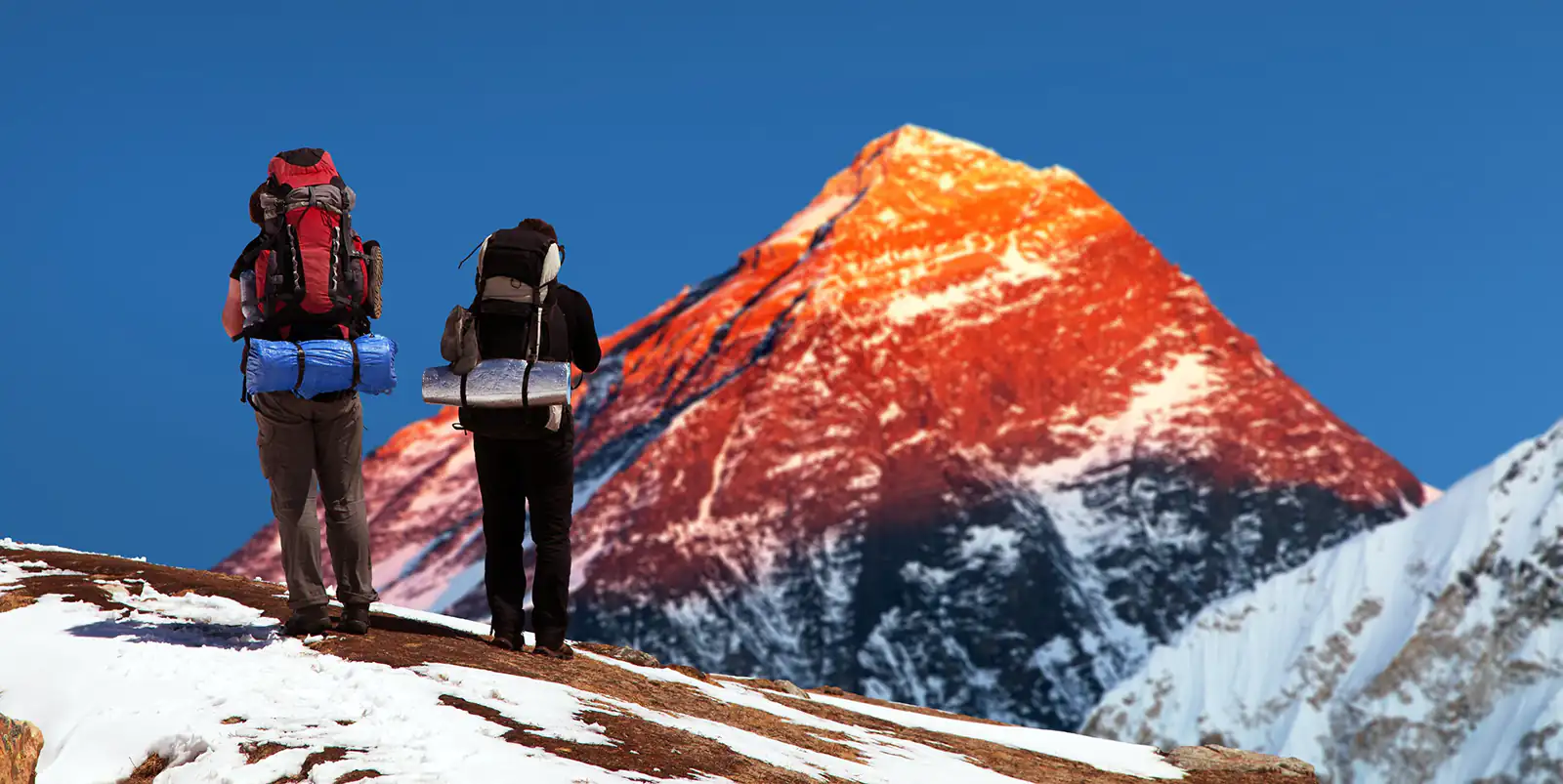
These mountain passes not only present physical challenges; they also hold great historical intrigue. For years, they have been vital trade and travel pathways between Nepal and Tibet. Today, they are significant segments of well-known trekking trails that fascinate thousands of tourists globally while providing them with a glimpse of how resilient local mountain societies are.
More than just scenic wonders, these passes act as vital arteries for local communities, connecting trade routes and bolstering the regional economy. Adventurers walking these high-altitude paths gain unique insights into the lifestyles and traditions of the Himalayan people, establishing the Mountain Passes of the Everest Region as a cornerstone of Himalayan trekking and exploration.
Everest Base Camp Trek
Everest Base Camp Trek with Helicopter Return
Luxury Everest Base Camp Trek
History of Exploration
The allure of Mount Everest started attracting explorers and adventurers to the Everest Region in the early 20th century, marking the beginning of trekking to its base camp. The local Sherpas initially utilized the unpaved routes.
Still, in 1953, Sir Edmund Hillary and Tenzing Norgay’s successful ascent of Mount Everest gained widespread recognition and changed the course of these routes. These once rugged routes evolved into established trekking paths, thanks to the exploration and integration of significant mountain passes like Kongma La, Cho La, and Renjo La.
These passes broadened the trekking routes and significantly enriched the experience for trekkers by providing access to the spectacular views and remote areas of the Everest Region, making it one of the most renowned trekking destinations in the world.
Major Mountain Passes of the Everest Region
The Everest region hosts a variety of passes, offering experiences for every kind of trekker, from beginners to the determined and those seeking the ultimate challenge. Each pass features its unique character, challenges, and rewards.
Pheriche Pass (4,270 m)
Located at an altitude of 4,270 m (14,009 ft), Pheriche Pass acts as the gateway to remote villages, linking them crucially with the Himalayas. Trekkers often use this moderately challenging altitude as a popular acclimatization stop. A gentle ascent leads to Pheriche Pass, contrasting with the technical challenges of higher passes in the Everest region.
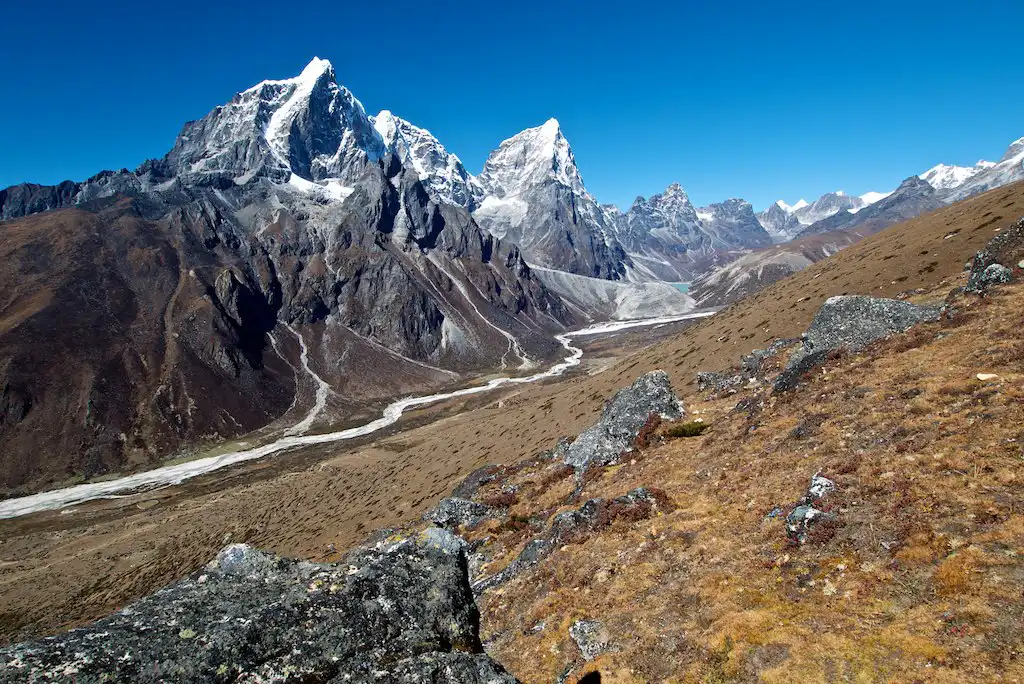
Reaching Pheriche Pass rewards travelers with breathtaking views of Ama Dablam, the distinctive ridges of Kantega, and the mighty surrounding glaciers. In this natural beauty’s perfect backdrop, visitors experience the traditional Sherpa lifestyle in the Gokyo Valley’s stepping stone, enjoying the warm and welcoming hospitality at the local teahouses.
Lobuche Pass (5,110 m)
Lobuche Pass, which is 5,110 meters (16,765 feet) high and serves as a checkpoint for the Everest Base Camp journey, is tucked away between the bustling settlement of Lobuche and Everest Base Camp. This vantage point reveals the stunning peaks of the Everest region and showcases the mighty Khumbu Valley.
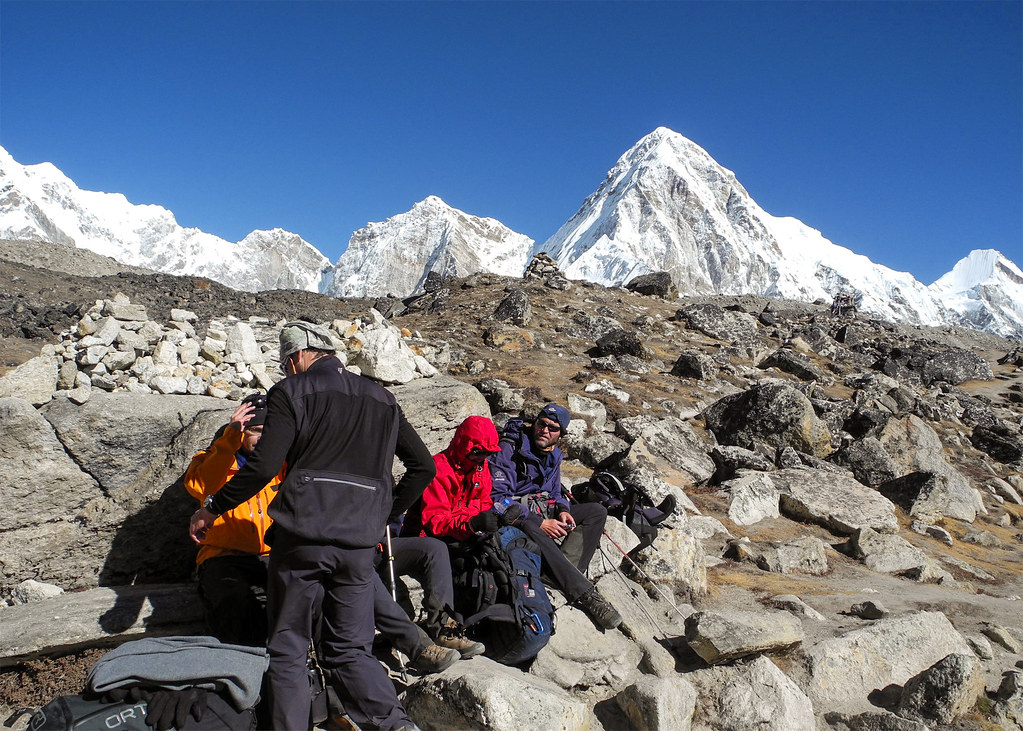
The Khumbu glacier, Taboche, Cholatse, Lobuche East and West, Pumori, Nuptse, Khumbutse, Lingtren, Lola, and even Mount Everest itself are all breathtaking sights to behold from Lobuche Pass.
To further enhance the stunning vista, the pass provides up-close views of Ama Dablam, Lobuche East, and the Khumbu Icefall. Standing among these towering peaks during an adventure at Lobuche Pass is an exhilarating experience. Additionally, its challenging altitude makes it an ideal acclimatization point for trekkers aiming for higher expeditions in the region.
Thukla Pass (4,830 m)
At an altitude of 4,830 m (15,846 ft), Thukla Pass sits on the edge of Solukhumbu, marking a significant spot on the Everest trekking map. The trek to Thukla Pass is straightforward and unchallenging, offering a mix of panoramic views, historical insight, and a poignant reminder of the mountains’ perils.
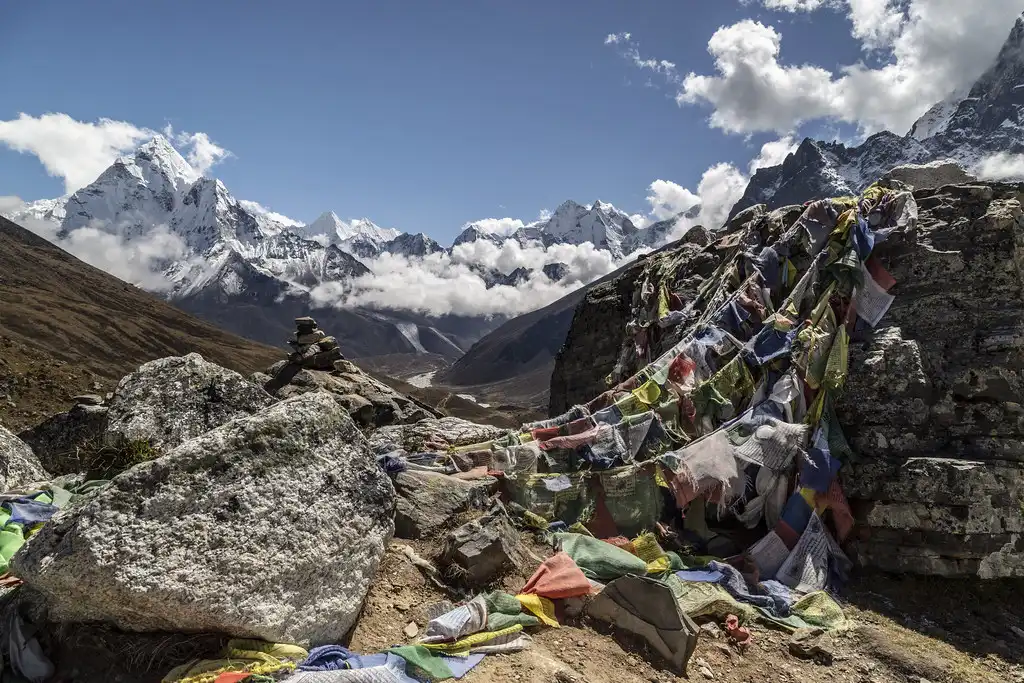
Known as one of Everest Base Camp trek’s most popular yet somber viewpoints, Thukla Pass also serves as a memorial for the climbers and Sherpas who have perished in the Everest region, underscoring the formidable nature of Mt. Everest. The atmosphere at Thukla Pass is contemplative, with prayer flags fluttering in the wind, echoing the memories of those lost and the formidable force of nature.
Overlooking the Gyirong valley, the pass provides spectacular views of Himalayan giants like Cho Oyu, near the historical trade route to Tibet. Below the pass, Dughla village offers trekkers a place to rest and reflect.
Kongma La Pass (5,535 m)
Kongma La Pass, the highest pass on the Everest Three Passes journey, soars to an astounding 5,535 m (18,159 ft) above sea level, even higher than Everest Base Camp. This pass challenges trekkers both physically and mentally, offering in return spectacular views of Mt. Everest’s south face in its full grandeur.
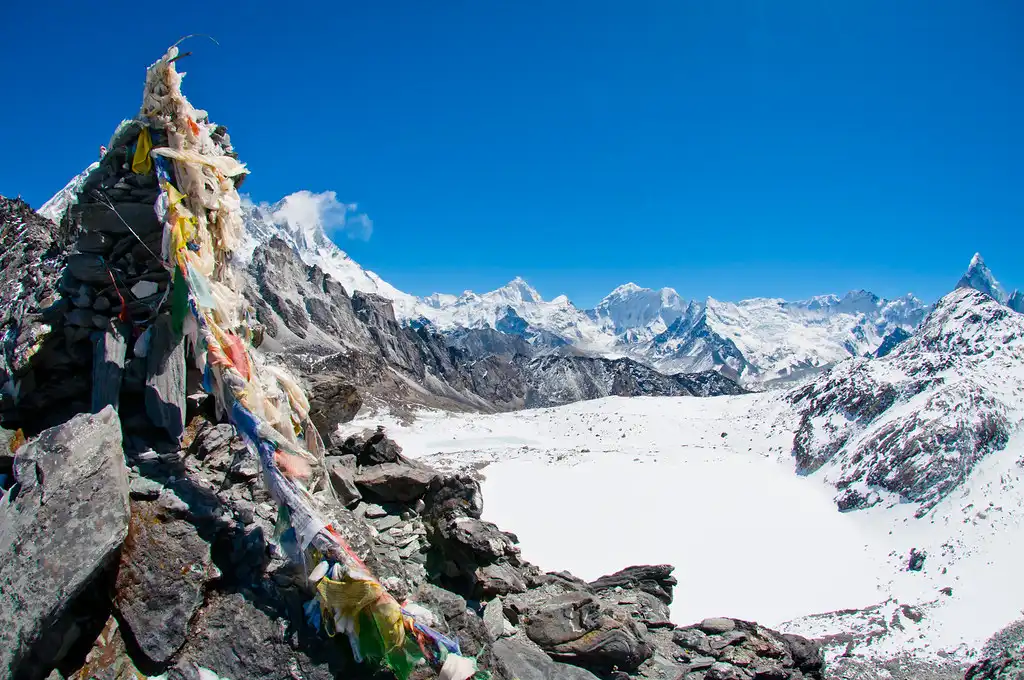
The stunning vistas offered by nearby peaks like Lhotse, Nuptse, and Ama Dablam give climbers a feeling of being atop the world. The approach to Kongma La includes a steep, rocky climb from Chukhung, with switchbacks and loose scree increasing the ascent’s difficulty.
The terrain, marked by glacial features and icy valleys, necessitates careful acclimatization and surefootedness to overcome the high-altitude challenges and rugged paths.
Everest Base Camp Short Trek
Jiri to Everest Base Camp Trek
Everest View Trek
Cho La Pass (5,420 m)
The Cho La Pass, sitting at 5,420 m (17,782 ft), marks another pivotal point in the Everest Three Passes trek, featuring an icy crossing among the Khumbu region’s towering peaks. This pass forms a crucial part of the route from Gokyo to Everest Base Camp, enhancing the trek’s adventurous spirit.
Connecting the Gokyo and Khumbu valleys, Cho La Pass demands technical skills and physical endurance from trekkers. The journey involves navigating the Ngozumpa Glacier’s icy crevasses and overcoming altitude-related challenges. Trekkers may need to employ basic climbing techniques, such as ropes and ladders, in some sections.
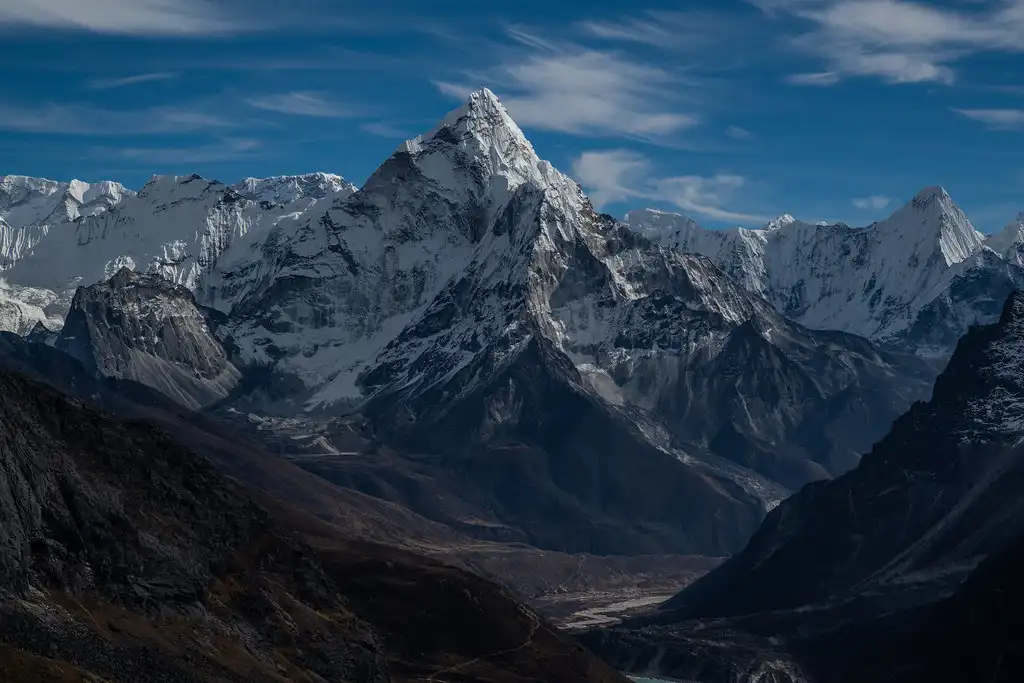
Reaching the top of Cho La offers rewarding 360-degree views of the Khumbu valley and prominent peaks like Makalu, Lhotse, Cholatse, Lobuche, and Mt. Everest’s south face, providing a sense of achievement amid the dramatic landscapes. The descent from Cho La leads to the tranquil Gokyo Valleys and lakes, offering a serene recovery from the arduous climb.
Renjo La Pass (5,360 m)
Renjo La Pass, the last leg of the Everest Three Passes journey, is renowned for its breathtaking panoramic views and is located at an elevation of 5,360 m (17,585 ft). Renjo La Pass can be approached independently by hikers or as a component of the Gokyo and Renjo La Pass trek.
Offering a seclusive experience, Renjo La differs from the more frequented trails of the Everest region, providing tranquility amidst the Himalayas. It bridges the well-known Gokyo Valley with the less-explored Nagphu Valley, serving as a great alternative to Cho La Pass.
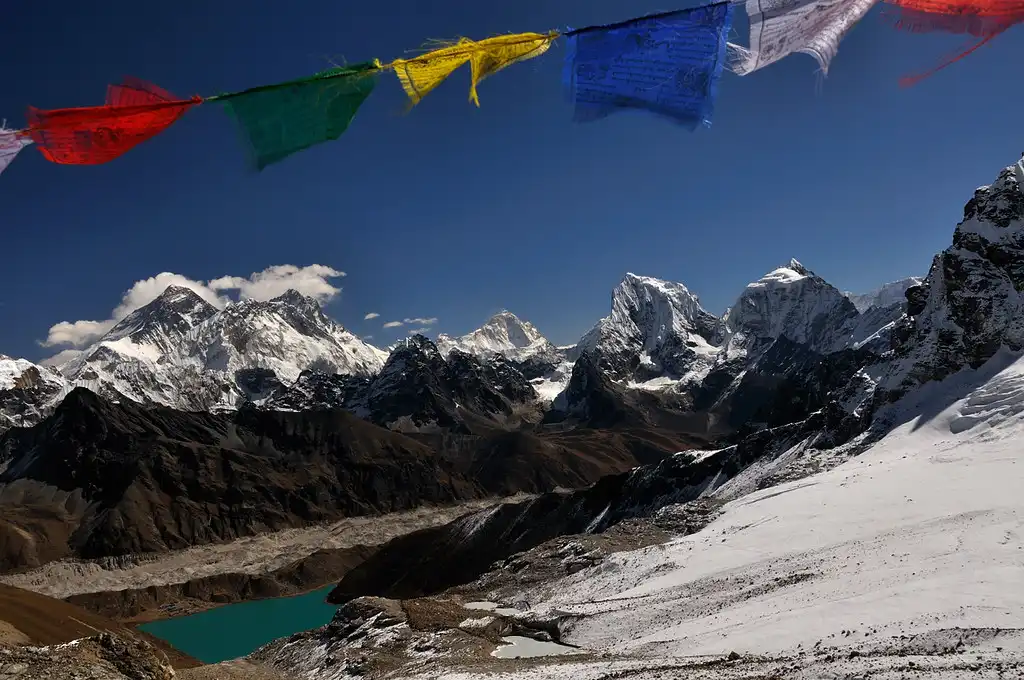
The breathtaking vistas of the Gokyo Lakes against the backdrop of Everest, Lhotse, Makalu, and Cho Oyu are a prize for trekkers who successfully ascend Renjo La. The pass also ensures interaction with the Sherpa community, which is known for its warm hospitality.
While not technically demanding, Renjo La’s altitude above 5,000 m challenges trekkers physically, necessitating acclimatization and preparation for limited amenities in this remote trek.
Amphu Labtsa Pass (5,845 m)
At 5,845 m (19,176 ft), Amphu Labtsa Pass stands as the highest mountain pass in the Everest region and Nepal, presenting steep ascents not meant for the faint-hearted. Nestled between the Upper Hongu Valley and Chukkung Valley, it ranks as the region’s most technical and demanding pass, once serving as a traditional Sherpa trading route.
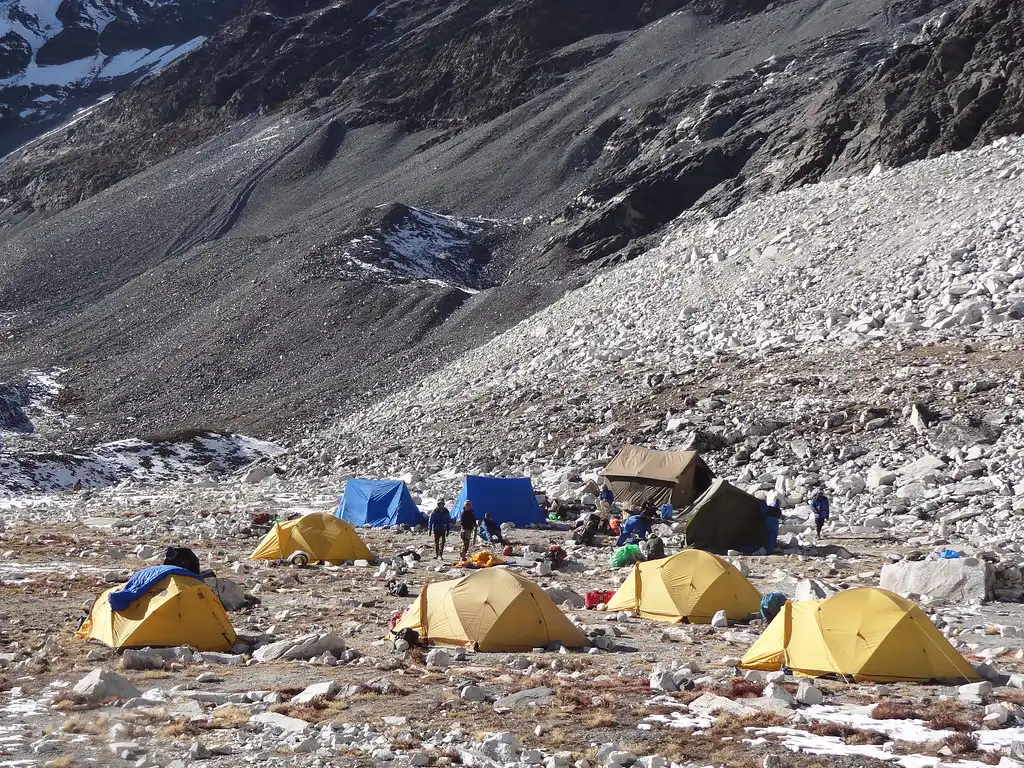
Climbers face a challenging ascent, navigating through steep, rocky paths filled with loose scree and boulders that become snow-covered, icy slopes on higher grounds. The descent involves navigating through ropes in steep sections, often requiring rappelling skills and a figure-8 descender. Mastery over snowy conditions, surefootedness, and excellent rappelling skills become crucial to tackling Amphu Labtsa, which remains snowbound year-round.
Acclimatization is vital to prevent altitude sickness, while mental resilience ensures calmness under the thin air’s pressure. The pass provides access to the secluded Hongu Valley. It boosts hikers’ self-confidence with its captivating views of Lhotse Shar, Island Peak, Kanchenjunga, Makalu, Everest, Cho Oyu, and the Imja Glacier.
Zatrwa La Pass (4,610 m)
At 4,610 meters (15,124 feet), Zatrwa La Pass is a remote but well-liked destination on the Mera Peak Circuit trip. It connects the Khumbu and Hinku Valleys and divides the Everest Base Camp trip from the Mera Peak Circuit.
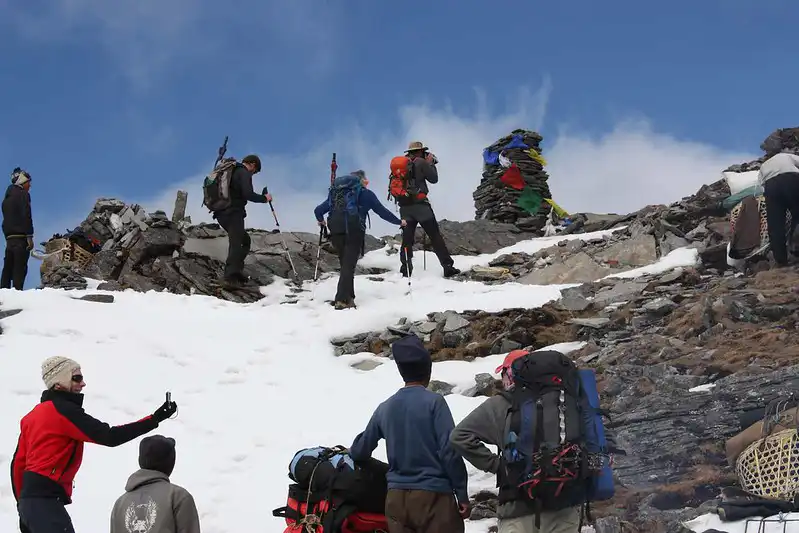
This lesser-known pass offers breathtaking views of Numbur Himal, Kusum Kanguru, Cho Oyu, Kongde Ri, Mera Peak, and the Hinku Valley, providing a serene and solitary trekking experience. However, the journey to Zatrwa La is challenging, marked by steep climbs and rugged terrain.
Mera La Pass (5,415 m)
Known as the gateway to Mera Peak, standing at 6,171 m, Mera La Pass is a hidden gem in Nepal, located at an altitude of 5,415 m (17,765 ft). This pass, less technical compared to others in the Everest region, lies in the Hinku Valley and borders Sagarmatha National Park, presenting an adventure that extends beyond Everest’s shadow.
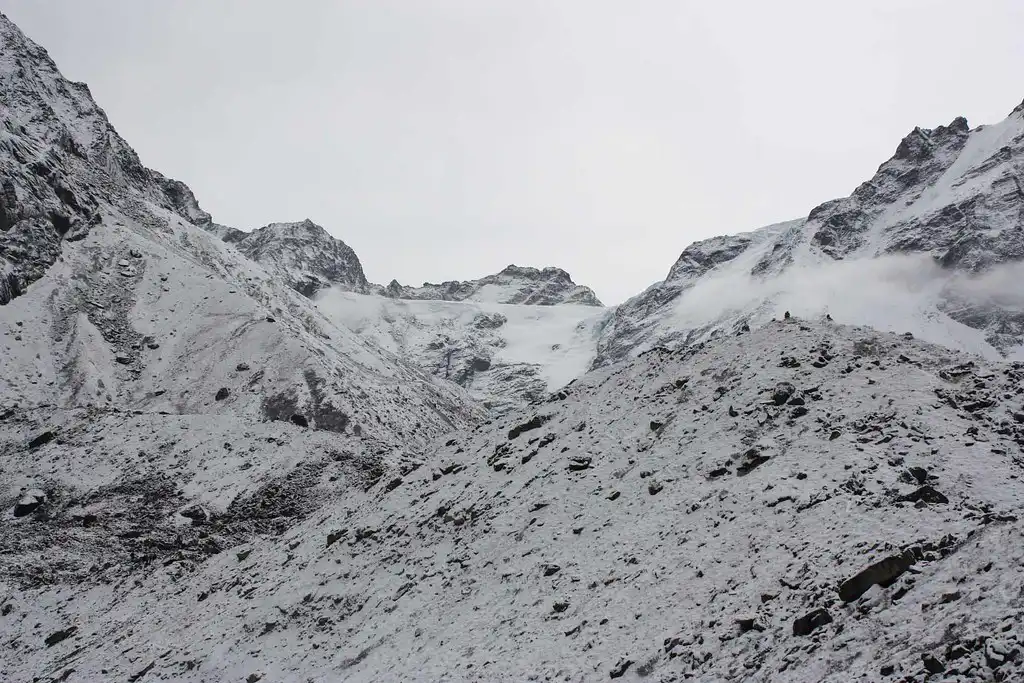
Offering mesmerizing views of Makalu, Kanchenjunga, Everest, and other regional giants, Mera La not only serves as a standalone adventure but also prepares and base camps climbers for the ascent to Mera Peak.
Conclusion
Mountain passes like Kongma La, Cho La, Renjo La, and others significantly enhance the trekking experience of Everest Base Camp by presenting unique challenges and stunning vistas. These passes serve as vital links across the Himalayas, offering trekkers a deep dive into the region’s natural and cultural wealth.
They stand as portals to some of the most magnificent landscapes on Earth, necessitating a deep respect for both the environment and local customs. It falls to trekkers to tread these high-altitude routes responsibly and sustainably, preserving the Everest Region’s untouched beauty for the enjoyment of future generations.
